DIY Rose Body Lotion Without Beeswax {Non-Greasy + Natural}

See how to make nourishing, non-greasy DIY rose body lotion with rose water and other natural ingredients! This rose lotion recipe is suitable for all skin types and provides long-lasting moisturization. The easy homemade lotion without beeswax can also be turned into rose body butter, and includes printable labels and a video tutorial ( here).
Scroll down for recipe.
Disclosure: This post contains affiliate links, meaning, at no additional cost to you, we will earn a small commission if you click through and make a purchase. Learn more
DIY rose body lotion without beeswax
Did you ever fall in love with a skincare product only for it to be discontinued? It happens to me. All. The. Time. Most recently with the Evelyn Rose Lotion from Crabtree and Evelyn. Irena gifted me the lotion a couple of years ago, and I adored everything about the product: the light texture, the excellent moisturization, and the intoxicating rose fragrance. Just heavenly!
When Crabtree and Evelyn sadly closed all physical stores a while ago, this body lotion was among the discontinued products. That woman who stormed the C&T shop in Mayfair to buy all rose body lotion left in stock? She was me, I admit it.
Easy homemade lotion with rose water
After emptying the last bottle, I decided to come up with my own DIY rose body lotion recipe. This homemade rose lotion went through a few iterations as I was testing different ingredients and formulations.
You may have already spied this DIY body lotion in my rose body wash recipe. And today, I’m excited to share this easy body lotion recipe with you!
Whether you have been looking for a homemade lotion without beeswax or a body lotion for glowing skin – you’re in the right place! This rose water body lotion is mositurising, light-weight, non-greasy and absorbs fast. I also show a neat trick to turn the lotion into rose body butter.
What are the benefits of homemade body lotion?
The main benefit of homemade body lotion is to mositurise and hydrate the skin. DIY lotion also helps to smooth and soften, as well as to restore and protect the skin.
Another benefit of making homemade lotion is that you can control and customise the ingredients and know exactly what is in your product.
Why is this important? Well, many skincare products contain silicones, which make your skin feel smooth without actually helping. On the contrary, silicones can cause acne, skin congestion and dehydrate the skin, resulting in dull, dry skin.
Want to learn how to make natural skincare products that are good for your skin? Keep on reading!
What is body lotion?
How do you make rose lotion? Making DIY lotion may seem difficult, but this natural rose lotion recipe is ready in just 15 minutes and easier than you think – once you know the basics!
A lotion is emulsion, a combination of water (or hydrosols), nourishing oils and other skin-caring ingredients. Since oil and water don’t mix well, we need an emulsifying agent to hold them together.
Every lotion consist of 3 phases:
- water phase = water solvable ingredients (rose water, glycerin)
- oil phase = oil-soluble materials (rose-infused oil, mango butter, babassu oil, Olivem)
- cooling phase = heat-sensitive materials (rose absolute, preservative, vitamin E and provitamin 5)
How to make DIY rose body lotion
Ready to make silky lotion that isn’t greasy? Let me walk you through the steps for how to make body lotion from scratch!
Heat the water and oil phase
To form an emulsion, the water and oils must reach the same temperature. The easiest way to do this is to warm both phases in a water bath. Here is how you do it:
- Pour the rose water and glycerin into a deep, heatproof jar or mixing container.
- Add the rose oil, babassu oil, mango butter, and Olivem 900 into another heatproof jar.
- Create a water bath by filling a large pot with water and place both jars in the pot.
- Heat over a low flame until the oils and Olivem have completely melted. The water should not boil, only mildly simmer. Be mindful of heat and steam when handling the jars.
Tip: Tall jars such as these beakers or 32-oz mason jars are great vessels to warm the phases. You can also heat the water and oil phases in 2 separate pots in case you don’t have a pot large enough to fit both.
Blend the emulsion
Be sure to have your stick blender (fitted with blade attachment) ready for this step.
- After all ingredients are melted, take the oil and water phase out of the water bath. Be careful the jars may be hot.
- Place the stick blender in the water phase and start blending to create a vortex.
- Slowly pour in the oil phase while mixing constantly. It takes a moment to emulsify the ingredients, so don’t be alarmed if you see the phases separating. Keep blending until the two phases are combined and a homogenous emulsion has formed. It will be thick and creamy. This process takes approximately 3 to 5 minutes.
- If you want to tint the lotion (as I did), add a small amount pink mica and give the mixture one last blend until mixed in. This step is optional. Without a colourant, the lotion will simply appear white.
Tip: A stick blender works best for this step as it creates the needed agitation to bind the water and oil. Hand blending is not enough.
Add the cooling phase
Once the emulsion is created, we can move on to add the cooling phase ingredients:
- Add the preservative, vitamin E, rose absolute, and provitamin B5.
- Whisk until the materials are well incorporated. Let the lotion cool to room temperature.
- Transfer the rose body lotion into a pump dispenser. I used a funnel to fill the lotion into my dispenser.
Ingredients for Homemade rose body lotion
I have incorporated roses in different ways in this rose lotion recipe. Here is what you need to know about the ingredients:
Rose water
Apart from adding a pleasant scent, rose water or rose hydrosol are a wonderful addition to homemade body lotion. The floral water is said to have antibacterial, antioxidant and anti-inflammatory properties that may tone and hydrate the skin.
And unlike essential oils, which can be irritating on very sensitive skin, every skin type can tolerate floral waters.
Rose-infused oil
How to make rose infused oil
While pre-made rose oil is available, it’s also easy to make a herbal oil infusion at home. Here is how to make rose-infused oil with fractionated coconut oil or squalane oil and dried rose petals:
- Add the coconut oil/squalane oil and dried rose petals into a heatproof jar or bowl and warm in a water bath for 30 minutes to an hour. Heat at the lowest possible temperature to avoid burning the oils or flowers and add more water if necessary.
- Strain the oil through a coffee filter or a fine-mesh tea infuser to remove the solids and discard the petals.
- Allow the oil to cool before proceeding with the rest of the recipe.
Mango butter
Mango butter is rich in essential fatty acids, antioxidants, and vitamins. The nutrient-high plant butter has wonderful moisturising and emollient qualities, which restore and soften the skin. The ingredient gives the rose water body lotion a creamy, luxurious feel without being greasy. Mango is similar to shea butter but has a more neutral smell.
Babassu oil
Packed with antioxidants, babassu oil has anti-inflammatory and anti-bacterial properties, which can promote skin health and wound healing. The oil is also rich in saturated fatty acids that are nourishing and moisturizing, similar to coconut oil. But unlike coconut oil, babassu oil is lightweight and won’t feel greasy on the skin.
Both mango butter and babassu oil also have a mild cooling effect and can help to soothe skin irritations, eczema and sunburns.
Olivem 900
As previously mentioned, you also need an emulsifier that combines the water and oil phases successfully. I chose Olivem 900 as the emulsifying agent. Olivem 900 is derived from olives and looks like ivory wax flakes. The product lends a nice viscosity and gives the homemade body lotion a lightweight, silky touch.
Rather than simply having a functional purpose (creating the emulsion), the product is also an active ingredient in its own right. The emulsifier reduces transdermal water loss, providing long term moisturisation, and increasing the wash-off resistance.
Olivem 900 is usually suggested for water-in-oil emulsions (FYI this lotion recipe is an oil-in-water solution). Still, I decided to test it and found that lotion with Olivem 900 is more stable than one with Olivem 1000.
Buy it here: US, US, UK, UK, Canada, Australia
Preservative
As the DIY rose lotion contains water, a preservative is needed to inhibit bacteria and mould growth. I used Preservative Eco, an eco-certified broad spectrum preservative, which is easy to find in the UK. You could also use Linatural or Optiphen Plus.
Vitamin E
Vitamin E is a versatile and useful ingredient for homemade skincare products. It acts as a natural antioxidant neutralising free radicals while helping to moisturise and soften the skin.
Another benefit is that the antioxidant properties of vitamin E also protect the oils from oxidation (= going rancid) and help to prolong the shelf life of the vegan lotion recipe. However, it doesn’t replace the preservative.
Provitamin B5 (optional)
Provitamin B5, also called d-panthenol, is a member of the vitamin B family and a key ingredient to keeping your skin soft, moisturised, and healthy.
When provitamin B5 is absorbed through the skin, the provitamin converts into vitamin B5. This vitamin B5 has natural moisturising, soothing, healing and regenerating properties, making it an effective ingredient in this homemade lotion for pump bottle.
Essential oils (optional)
Using essential oils isn’t necessary for this non-greasy homemade lotion, since rose hydrosol and rose-infused oil provide a pleasant rose scent. You can, of course, add essential oils to give the lotion formula a stronger fragrance. Try one of the following ideas for this rose water lotion recipe:
- rose absolute – Rose absolute imparts an intoxicating scent, that will lift the mood and put your mind at ease.
- geranium – Geranium has a rich floral scent, and the oil’s skin-balancing properties can improve the overall skin complexion.
- rose geranium – This EO has a more herbaceous rose smell. Rose geranium is also said to reduce bacterial, fungi, and viruses that cause skin disease and infections.
Those with very sensitive skin or a medical condition should consult a medical caregiver before using essential oils. Hypersensitive skin types should avoid essential oils altogether, unless you know that a certain oil won’t cause a reaction.
Substitutions
You can make the following ingredient swaps for this body lotion recipe. Just be sure to maintain the lotion making ratios.
- rose water: Rose water can be replaced with another floral hydrosol or distilled water.
- rose infused oil: In case you can’t find rose infused oil, use fractionated coconut oil, jojoba oil or squalane oil.
- babassu oil: Deodorised coconut oil is a good replacement for babassu oil.
- mango butter: You can swap shea butter or cacao butter for mango butter. Using hard butters, such as cocoa, can alter the viscosity slightly, but the lotion will still turn out well.
- Olivem 900: Instead of Olivem 900, the vegan lotion recipe can also be formulated with Olivem 1000. Olivem 1000 is more widely available. To improve stability, add stearic acid or emulsifying wax as co-emulsifier.
DIY rose body butter
When developing this recipe, I found a very simple way to turn the lotion into a rich, non-greasy rose body butter. The instructions and measurements are exactly the same, you just have to triple the amount of Olivem 900 and prepare the body butter recipe with 3 tbsp / 15 g / 0.5 oz Olivem 900. That’s it!
The best part is that you can store the rose body butter recipe in a pump dispenser. An airtight jar or container is of course also an option. Unlike other recipes, this DIY body butter doesn’t harden or become brittle. It’s incredibly silky, lightweight and absorbs quickly.
If you prefer the slightly thicker viscosity of homemade body butter over lotion, try this simple trick.
More homemade body lotion and DIY rose skin care
If you like this DIY rose body lotion recipe, you might also enjoy some of our other homemade skincare ideas:
- nourishing rose lotion bars
- DIY body lotion for dry skin
- rose cleansing balm
- easy rose body wash
- rose bath truffles
- rose sugar scrub
Irena also has a post for rose lip balm, soap, and a bath soak.
PREP TIME
15 minutes
TOTAL TIME
15 minutes
DIFFICULTY
easy
Materials
- 1 cup / 230 g / 8.1 oz rose water
- 1/2 tbsp / 7 g / 0.2 oz vegetable glycerin
- 1/3 cup / 70 g / 2.5 oz rose-infused oil
- 3 tbsp / 30 g / 1 oz babassu oil
- 1 tbsp / 10 g / 0.4 oz mango butter
- 1 tbsp / 5 g / 0.2 oz Olivem 900
- 70 drops / 3.5 g / 0.1 oz preservative
- 40 drops / 2 g / 0.1 oz vitamin E
- 1 tbsp / 7 g / 0.2 oz provitamin B5 (optional)
- 40 drops / 2 g / 0.1 oz rose absolute (optional)
- pink mica (optional)
Instructions
- Pour the rose water and glycerin into a deep, heatproof jar or mixing container.
- Add the rose oil, babassu oil, mango butter, and Olivem into another heatproof jar.
- Create a water bath by filling a large pot with water and place both jars in the pot.
- Heat over a low flame until the oils and Olivem have completely melted. The water should not boil, only mildly simmer. Be mindful of heat and steam when handling the jars.
- After all ingredients are melted, take the oil and water phase out of the water bath. Be careful the jars may be hot.
- Place the stick blender in the water phase and start blending to create a vortex.
- Slowly pour in the oil phase while mixing constantly. It takes a moment to emulsify the ingredients, so don’t be alarmed if you see the phases separating. Keep blending until the two phases are combined and a homogenous emulsion has formed. It will be thick and creamy. This process takes approximately 3 to 5 minutes.
- If you want to tint the lotion (as I did), add a small amount pink mica and give the mixture one last blend until mixed in. This step is optional. Without a colourant, the lotion will simply appear white.
- Add the preservative, vitamin E, rose absolute, and provitamin B5.
- Whisk until the materials are well incorporated. Let the lotion cool to room temperature.
- Transfer the rose body lotion into a pump dispenser. I used a funnel to fill the lotion into my dispenser.
Notes: How to package rose lotion
You can package your lotion in a bottle with a flip top cap or a pump dispenser. I poured my homemade lotion recipe into this pretty glass dispenser from Ikea.
How to use this DIY lotion with rose water
There are several ways to apply the rose lotion.
Body lotion
This rose lotion recipe can be used on your entire body. Using the palm of your hands, lightly apply the lotion in circular motions. For dry areas (e.g. elbows, knees), gently press the lotion into your skin.
Tip: If applying rose lotion after a bath or shower, don’t dry your skin thoroughly. Massaging lotion into damp skin helps the ingredients better penetrate and locks in more moisture.
Hand lotion
The recipe can also be used as homemade hand lotion to prevent hands from drying out. Using hand lotion has made a big difference for my skin. I keep the pump dispenser by the sink and apply a small amount after washing my hands. The lotion absorbs quickly and helps to retain moisture in the skin.
For more hand care, be sure to have a look at our homemade hand cream recipe, too.
Facial moisturizer
While I prefer super-light moisturizers, dry skin types can benefit from this using as a face moisturizer. The rich formula locks in moisture and protects the skin barrier from the elements. And since the lotion consists only of non-comedogenic ingredients, you won’t have to worry about clogged pores, breakouts, or product acne.
Enjoyed the project?
The author may collect a small share of sales from the links on this page.

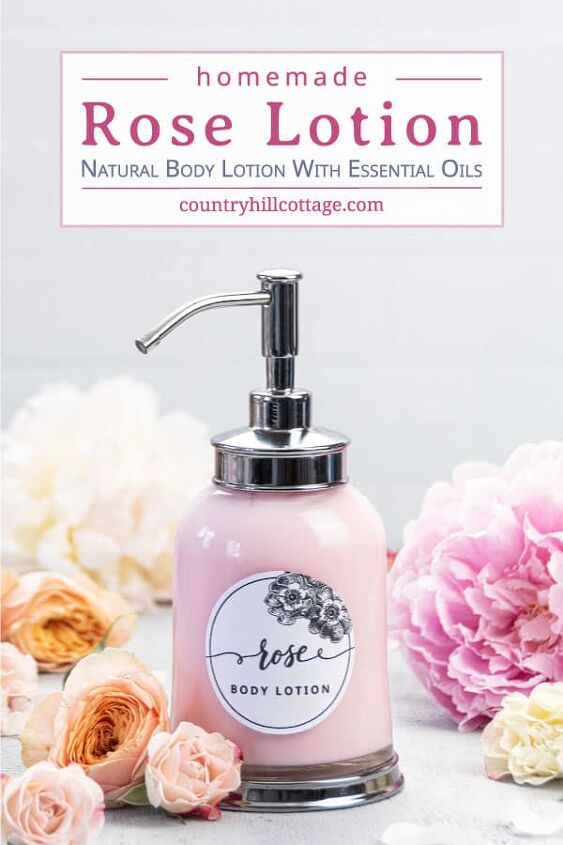







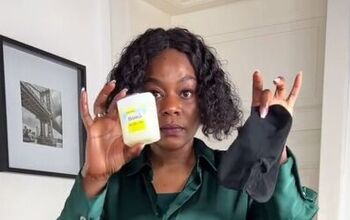


![DIY Violet Rose Body Lotion Bar Recipe [Homemade + Non Greasy]](https://cdn-fastly.upstyledaily.com/media/2023/01/20/8292745/diy-violet-rose-body-lotion-bar-recipe-homemade-non-greasy.jpg?size=350x220)


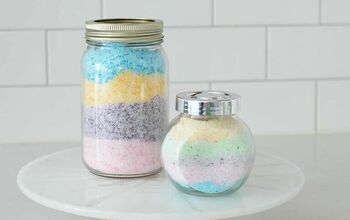

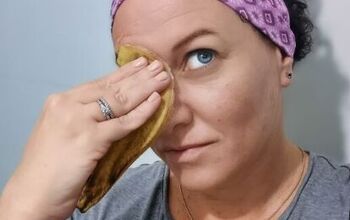

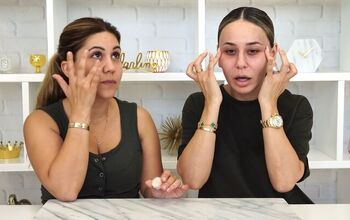

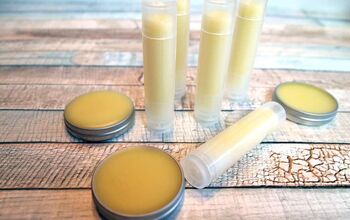
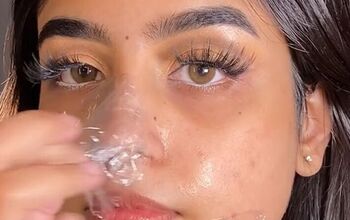

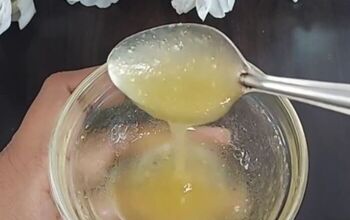

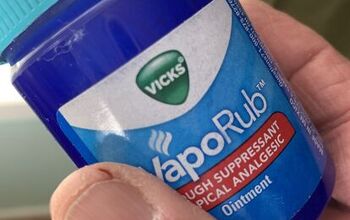
Comments
Join the conversation